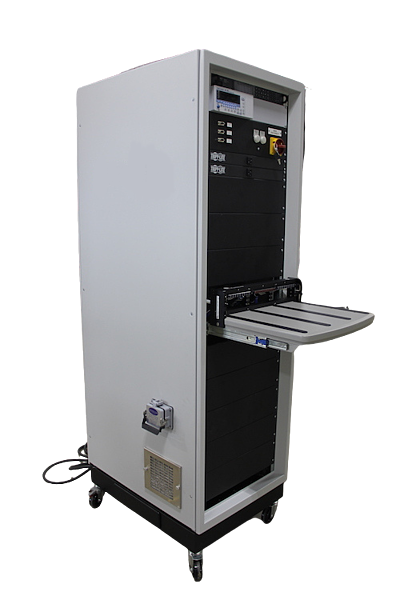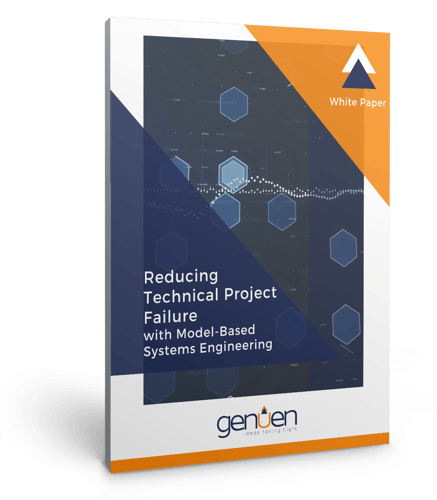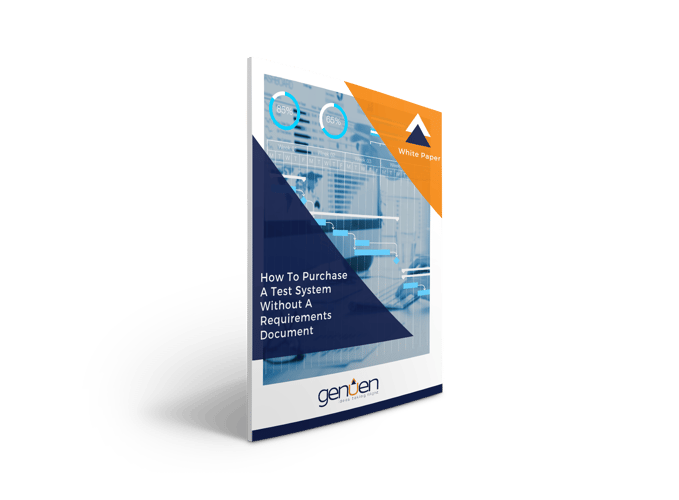Requirements Modeling Solutions
Elicit your business, system, and testing requirements through model analysis.
Developing Your System Scope
The top contributors to technical project failure are poor communication among stakeholders and incomplete business, system, and testing requirements. The exponential increase in the complexity of technology-centric projects constrains non-technical stakeholders' active participation and makes it difficult for technical stakeholders to visualize requirements early in the product development cycle. Genuen helps you overcome these challenges through model-based systems engineering (MBSE) solutions.

Model-Based Systems Engineering
Partner with Genuen to model your system requirements, facilitating stakeholder communication and reducing test requirements errors.
Capture system structure and system behavior through Unified Modeling Language (UML) graphical representations
- Begin to visualize your system during the business requirements definition phase of development
- Establish what must be present in your system with System Structure Models
- Determine what your system will do (and how) with System Behavior Models
- Explore how different sub-systems and components will interact from various vantage points
- Reduce requirements errors of omission by exposing difficult to capture decision paths
Accelerate complex system deployment through model-based design workflow simulation
- Establish test vectors through mathematical Model-in-the-Loop (MIL) simulation
- Expose problems with execution in the embedded environment through Processor-in-the-Loop (PIL) simulation
- Confirm controller software functionality through Software-in-the-Loop (SIL) simulation
- Validate MIL stimulus and response through Hardware-in-the-Loop (HIL) simulation in embedded hardware
WHITE PAPER
Reducing Technical Project Failure with Model-Based Systems Engineering
Executing a successful technical project is an immense challenge. As much as 70% of all projects fail, and that technology projects fail at an even higher rate. How do you reduce technical project failure? Implementing model-based systems engineering (MBSE) early in the product lifecycle improves communication among project stakeholders (both technical and non-technical) and helps to elicit project requirements. In this white paper, we outline two powerful MBSE modeling methodologies.
Benefits of Requirements Development through Modeling
Create a Flexible Model
that Can Scale with
Your System
Achieve Greater Stakeholder Involvement from the Beginning
Achieve Flexible, Timely, Cost-Effective Product Development
Reduce Errors of
Omission
Accelerate
Time-to-Market
Successfully Execute Complex Projects
WHITE PAPER
How to Purchase a Test System without a Requirements Document
Development of a new test system is typically driven by a statement of requirements, but with new and emerging technologies, those requirements may not be defined (yet). In this white paper, we discuss how designing a robust and thorough test system can still be possible while also setting you up to meet future requirements.
WHITE PAPER
Translating Experience from Aerospace to Other Industries
Learn how Genuen's experience in the development of test infrastructure to meet strict standards such as DO-178 translates to standards and compliance testing in other industries. The expertise of compliance lies in understanding the applicable process objectives; and in setting the project up for success in each phase through careful planning, execution, and attention to detail.









